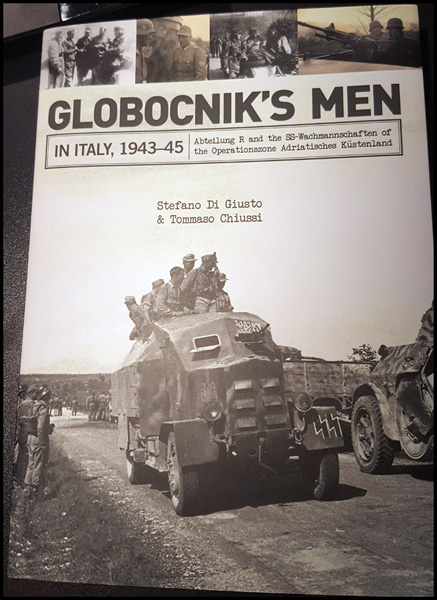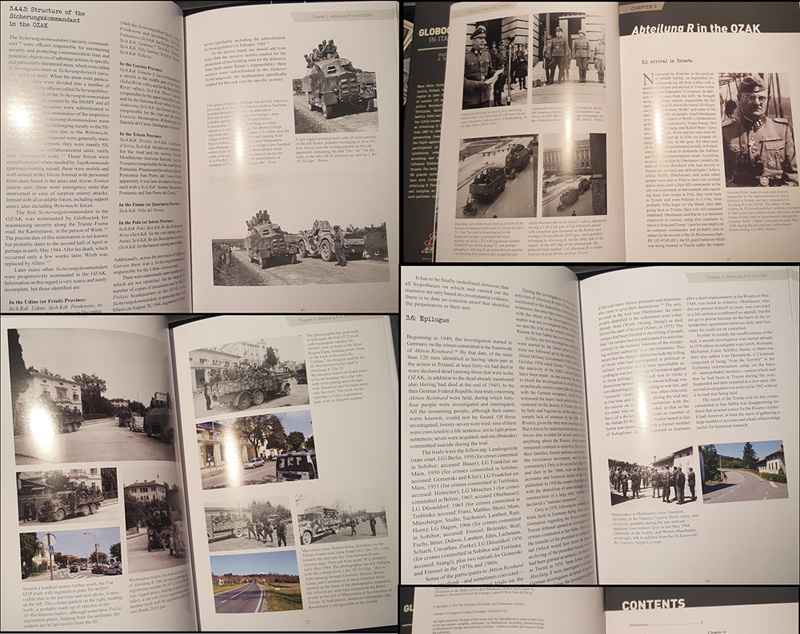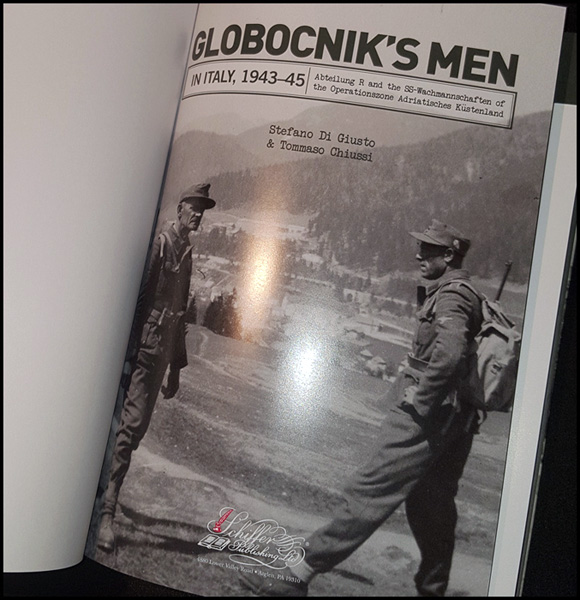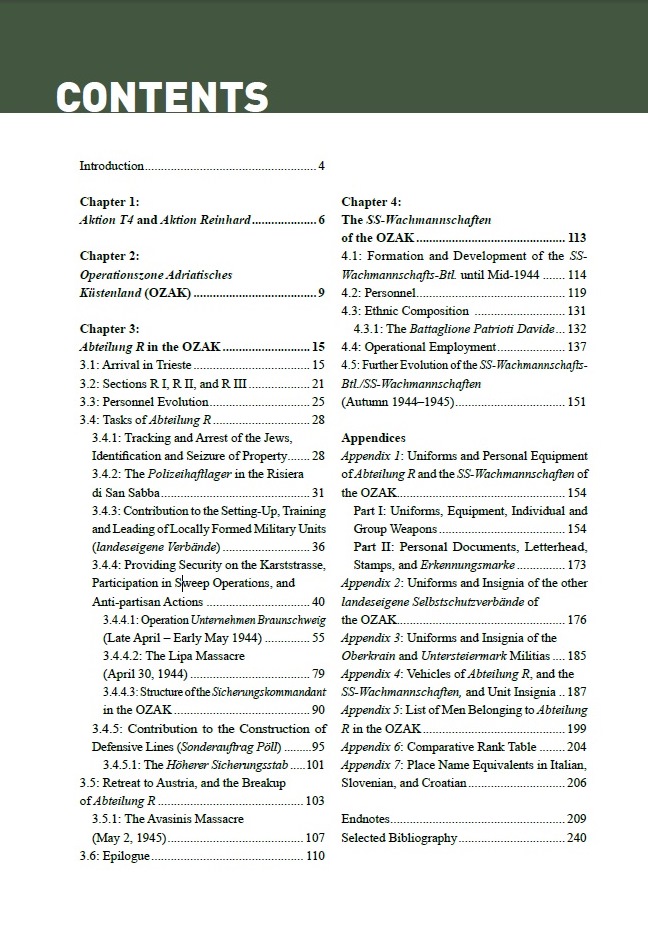This book due to arrive in December 2016:
Globocniks Men in Italy, 1943-45 : Abteilung R and the SS-Wachmannschaften of the Operationszone Adriatisches Kustenland
Hardback English
By (author) Stefano Di Giusto , By (author) Tommaso Chiussi

& is on bookdepository (freeshipping) pre-order :
https://www.bookdepository.com/Globo.../9780764352546
Really looking forward to this !
Globocniks Men in Italy, 1943-45 : Abteilung R and the SS-Wachmannschaften of the Operationszone Adriatisches Kustenland
Hardback English
By (author) Stefano Di Giusto , By (author) Tommaso Chiussi

& is on bookdepository (freeshipping) pre-order :
https://www.bookdepository.com/Globo.../9780764352546
Really looking forward to this !
When Odilo Globocnik, SS and police leader in Lublin, Poland, transferred to the Italian OZAK region in late 1943, he took with him a group of around 100 men who had run the notorious Aktion Reinhard extermination campsBelzec, Treblinka, Sobiborwhere 1.5 million people (mostly Jews) had been killed. This book describes the little-known activities of this group, known as Abteilung R (Reinhard), in the OZAK region from 1943 to 1945. Here they not only continued persecuting Jews, but also became involved in the fight against the armed resistance movement, participated in security tasks, anti-partisan operations, retaliation operations including arresting and killing of civilians, and ran the infamous Risiera di San Sabba police camp in Trieste. The book also covers the SS-Wachmannschaften (SS guards units) of the OZAK, military units that were formed locally and had links with Abteilung R. There are also chapters on uniforms and insignia, as well as photographs related to anti-partisan operations in the region.






Comment